A comprehensive review of local programs intended to help area youth has helped Kearns, a township in Salt Lake County, Utah, shift public funding to those initiatives that most effectively improve outcomes for residents.
In 2015, Salt Lake County partnered with Evidence2Success—an initiative of the Annie E. Casey Foundation—to ensure that social services were addressing the issues facing local young people. The effort focused initially on Kearns, the county’s most diverse township.
Working with the initiative, a community coalition conducted a detailed assessment to identify Kearns youth’s most prevalent behavioral problems and create an inventory of the services available to address those needs. The group included residents as well as representatives of local government, social services organizations, schools, and other organizations. Leaders in the township of about 35,000 ultimately used the information to guide budget decisions on how best to use limited local resources.
The coalition began by analyzing state survey data and found that youth in Kearns had higher rates of alcohol and nicotine use, gang involvement, and depressive and mental health symptoms than those elsewhere in the state. Based on these data, the group identified the community’s most concerning risk factors—conditions, such as alcohol use or symptoms of depression, that increase the likelihood of negative outcomes. Members of the group then prioritized the most important outcomes for the youth population, such as making sure young people understand and avoid the harmful effects of substance abuse.
After determining specific goals, the coalition conducted a four-step program assessment process to determine whether existing services addressed these priorities. That helped the group identify gaps in the services and select any additional needed programming. To do this, coalition members:
- Created an inventory of Kearns’ programs, including detailed information such as location, age groups served, and priority outcomes addressed by each.
- Reviewed the data on existing programs to understand which are evidence-based, demonstrate some evidence of effectiveness, or have no evidence of impact. To do this, the coalition used several research clearinghouses – resources that conduct literature reviews and rate interventions based on rigorous evaluations – and a list of state-approved evidence-based programs.
- Compared the community’s effective programs to priority outcomes to identify gaps in needed services. The coalition mapped each program according to risk factors addressed, age groups served, and delivery setting to determine where additional services were needed. Several types of gaps were considered, including lack of programs for various age ranges, demographic groups, or geographic regions.
- Put the findings to use. The coalition created a plan to work with program providers to expand their tested, effective programs in Kearns. It also consulted a national clearinghouse, Blueprints for Healthy Youth Development, to identify two programs that had already proved effective to address multiple priority gaps and community goals.
These steps helped the coalition verify which of the Kearns Township programs for youth were effective or what needs were not being met.
“The program assessment allowed us as a community coalition to not only recognize the services already being provided in Kearns, but also start conversations with service providers and community members to better understand the opportunities and needs,” said Caroline Moreno, coalition coordinator.
In addition to using this information to implement new and expand existing evidence-based programs, Salt Lake County will collect data on participant and process outcomes for these programs to ensure that they are effectively delivered and achieve intended results.
The community’s efforts have been rewarded with additional investments. For example, in 2017, the coalition received a five-year, $625,000 Drug-Free Communities Grant from the Office of National Drug Policy to continue and expand this work.
Written by Sara Dube and Priya Singh. Sara Dube is a director and Priya Singh is a senior associate with the Pew-MacArthur Results First Initiative.
Key Information
Source
Results First™
Publication DateJune 27, 2019
Read Time2 min
ComponentProgram Assessment
Resource TypeWritten Briefs
Results First Resources
Evidence-Based Policymaking Resource Center
Share This Page
LET’S STAY IN TOUCH
Join the Evidence-to-Impact Mailing List
Keep up to date with the latest resources, events, and news from the EIC.



